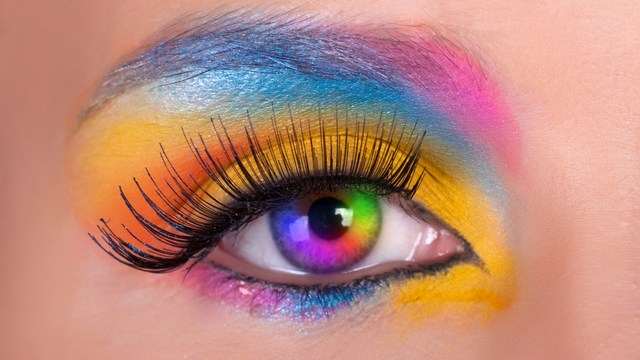 Photo: Getty Images
Photo: Getty Images
An eye infection may be caused by a virus, bacterium or fungus. Patients may have eye infection in one eye or both eyes, and may have infections that affect different parts of the eye. There are several different types of eye infections.
Sty
A sty is a lump that forms near the eyelid’s edge, which is commonly caused by the bacterium staphylococcus. Other bacteria and chronic inflammation may also cause a sty. Symptoms include eyelid swelling, tearing and eyelid pain along with the red lump.
Treatments include antibiotics, which can be administered as a topical solution or eye drops, and surgery, which is used in cases in which the sty is pus-filled and will not rupture.
Conjunctivitis
Patients with conjunctivitis have either an infection or swelling of the conjunctiva, which is the membrane that lines the eyelids. MedlinePlus noted that the most common cause of conjunctivitis is viruses. Bacteria, fungi, chemical exposure and allergies may also cause the condition. Symptoms include sensitivity to light, blurred vision, increased tearing and eye pain.
The treatment of conjunctivitis depends on its cause. For example, bacterial conjunctivitis is treated with antibiotics, allergic conjunctivitis is treated with allergy medications, and viral conjunctivitis goes away on its own.
Keratitis
Keratitis is an infection of the cornea, which is the clear covering on the front of the eye. If a patient has superficial keratitis, then the infection affects the outermost layers of the cornea and does not leave scars. But if a patient has deep keratitis, the deeper corneal layers are affected, which may result in scarring.
There are several different types of keratitis: fungal keratitis (caused by fungi), herpes keratitis (caused by the herpes simplex virus), bacterial keratitis (caused by bacteria), photokeratitis (caused by intense exposure to ultraviolet radiation) and amoebic keratitis (caused by Acanthamoeba).
Keratitis can cause excessive tearing, eye pain and blurred vision. Treatment will depend on the cause of the keratitis.
Parinaud Oculoglandular Syndrome
Parinaud oculoglandular syndrome is an eye infection similar to conjuncitivitis. Caused by parasites, viruses, bacteria or fungi, Parinaud oculoglandular syndrome usually affects one eye. Symptoms include swollen lymph nodes, fever and red eye. Treatment may include antibiotics, though MedlinePlus noted that in rare cases, patients may require surgery.
Cytomegalovirus Retinitis
MedlinePlus stated that cytomegalovirus is very common, but only patients with weakened immune systems become ill from the virus. When they have cytomegalovirus retinitis, they have an inflammation of the retina. The disorder begins in one eye, but may spread and affect the other eye.
Patients with cytomegalovirus retinitis will take antiviral medications, which are administered either orally, intraviteously or intravenously. If patients do not receive treatment, blindness may occur in four to six months.
Endophthalmitis
Endophthalmitis is a rare complication of eye surgery, such as cataract surgery. Caused by bacteria or microorganisms, endophthalmitis is an inflammation of the eyeball.
Patients may experience swelling of the eyelids, pain, redness and decreased vision. MedlinePlus warned that patients experiencing these symptoms after undergoing eye surgery should call their doctor immediately.
Dacryoadenitis
Patients with dacryoadenitis have an inflammation of the lacrimal gland, the gland that produces tears. Dacryoadenitis can be acute or chronic.
Acute dacryoadenitis is usually caused by a bacterial or viral infection, while chronic dacryodenitis is often caused by noninfectious inflammatory disorders. Patients may have excess tearing, pain and swelling.
Blepharitis
With blepharitis, patients have an inflammation of the eyelash follicles, caused by bacteria overgrowth. This bacteria overgrowth may result from an infection or seborrheic dermatitis.
Patients will have red and irritated eyelids. Their eyelids may burn, itch or be crusty. At the base of the eyelashes, they may have scales that stick to the skin.
References
MedlinePlus. Eye Infections. Web. 30 January 2012
http://www.nlm.nih.gov/medlineplus/eyeinfections.html
MayoClinic.com. Sty. Web. 30 January 2012
http://www.mayoclinic.com/print/sty/DS00257/DSECTION=all&METHOD=print
MedlinePlus Medical Encyclopedia. Conjunctivitis. Web. 30 January 2012
http://www.nlm.nih.gov/medlineplus/ency/article/001010.htm
American Academy of Ophthalmology. What is Herpes Keratitis?. Web. 30 January 2012
http://www.geteyesmart.org/eyesmart/diseases/herpes-keratitis.cfm
American Academy of Ophthalmology. What is Fungal Keratitis?. Web. 30 January 2012
http://www.geteyesmart.org/eyesmart/diseases/fungal-keratitis.cfm
American Academy of Ophthalmology. What is Bacterial Keratitis?. Web. 30 January 2012
http://www.geteyesmart.org/eyesmart/diseases/bacterial-keratitis.cfm
Centers for Disease Control and Prevention. Acanthamoeba Keratitis FAQs. Web. 30 January 2012
http://www.cdc.gov/parasites/acanthamoeba/gen_info/acanthamoeba_keratitis.html
MedlinePlus Medical Encyclopedia. Parinaud Oculoglandular Syndrome. Web. 30 January 2012
http://www.nlm.nih.gov/medlineplus/ency/article/000736.htm
MedlinePlus Medical Encyclopedia. Cytomegalovirus Retinitis. Web. 30 January 2012
http://www.nlm.nih.gov/medlineplus/ency/article/000665.htm
MedlinePlus Medical Encyclopedia. Endophthalmitis. Web. 30 January 2012
http://www.nlm.nih.gov/medlineplus/ency/article/001626.htm
MedlinePlus Medical Encyclopedia. Dacryodenitis. Web. 30 January 2012
http://www.nlm.nih.gov/medlineplus/ency/article/001625.htm
MedlinePlus Medical Encyclopedia. Blepharitis. Web. 30 January 2012
http://www.nlm.nih.gov/medlineplus/ency/article/001619.htm
Reviewed January 30, 2012
by Michele Blacksberg RN
Edited by Jody Smith





Add a Comment1 Comments
I had a stye recently and what helped me is a product recommended on this website: http://stye-treatment.com Hope it help others too..
January 30, 2012 - 7:04pmThis Comment